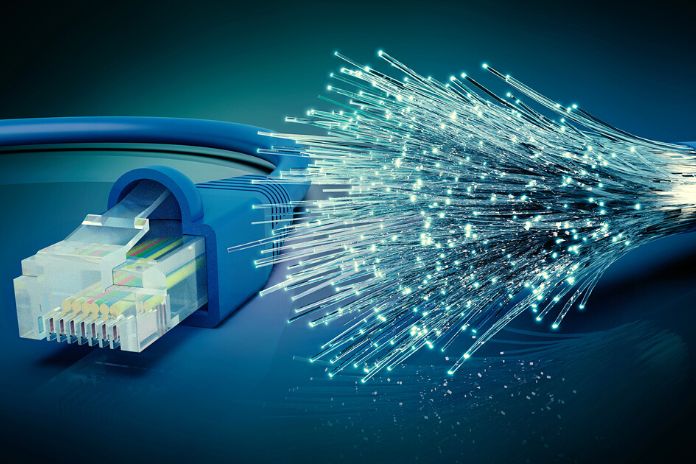In the world of connections, there has been rapid evolution, especially in recent years. Although it has created various opportunities, it has also triggered a universe of conflicting information on the subject: “Adsl or Fibra ?”. Thus, we needed to devote a space to develop the contrast between ADSL and fiber. It helps managers and entrepreneurs in choosing the best connection for individual needs.
What Is ADSL, And What Is Fiber?
Adsl or fiber? Here are the differences between ADSL and fiber from a technical point of view: ADS L, an English acronym for asymmetric digital subscriber line, is a technology that allows you to connect to the Internet using the so-called twisted pair. The ADSL does not require the installation of any additional equipment. Optical fiber, also known as ultra-broadband, is a more recent ADSL technology.
Instead of the classic telephone twisted pair, it uses filaments of glassy or polymeric materials to conduct the light internally. Compared to the standard copper pair, this means that each fiber cable can carry much more data in the same time interval. It was also ensuring optimal coverage of extensive distances. Thanks to these characteristics, an optical fiber connection allows you to reach higher actual speeds than a traditional ADSL line.
ADSL Or Fiber: Which One To Choose?
Once we have clarified what ADSL is and what optical fiber is, let’s continue by further analyzing the ADSL fiber difference to help you make your choice. If you are still immersed in doubt about fiber vs. ADSL, consider the other aspects: the connection’s quality, the service’s cost, and the place where your company is located. Regarding the quality of the connection, one of the parameters to check is the BMG. The Minimum Guaranteed Bandwidth is the guaranteed value below which it does not drop even in cases of traffic peaks or bandwidth saturation in the area involved.
As far as the price of the service is concerned, although in some cases it is not among the priority parameters, fiber certainly costs more on average than ADSL. When we refer to any critical issues related to the company’s position, we must make further technical clarification. With the ADSL, the connection is all in copper, from the reference center to the home. While the fiber optic connection can be of two types:
FTTH FIBER – Fiber Optic Connection To The Home
FTTC FIBER – mixed connection: travels on copper and optical fiber. The fiber section reaches the area cabinet (Cabinet, in fact), while the team from the cabinet to the home is in copper. This difference, which has implications in terms of connection speed and quality, is often linked to the infrastructure of the company headquarters. So it is always good to prioritize this aspect before leaning towards one solution or the other. Also, consider the hypothesis that some companies are located in particularly disadvantaged areas and need alternative connection solutions, such as SHDSL or radio links.
Optical Fiber: The Specific Advantages For Companies
Without prejudice to the assumption that each connection technology can have characteristics that make it suitable for specific needs, let’s discover together the advantages for companies in adopting optical fiber:
- Speed : The optical fiber is often faster than a traditional copper cable, reaching transmission speeds of 100Gbps, making it the most performing solution by far.
- Access to the cloud: The speed and bandwidth of optical fiber translate into faster access to data and applications on the cloud. Salespeople or front office employees can serve customers without delays and communicate with them in real-time without line failures.
- Signal Strength: The signal in a fiber connection degrades much later and over much longer distances.
- Bandwidth: Applications such as web conferencing, streaming, file sharing, and cloud tools can significantly benefit from a fiber-based connection.
- Cost savings: Having a reliable, fast, symmetrical, and resistant connection, as we have seen, can significantly help a company to avoid drops or interruptions in productivity. So, on balance, the question’ fiber or ADSL?’ you should already have some answers.
Difference Between ADSL And Fiber: The EnjoIP Offer
For the management of an SME or multinational company, Planet fiber will be the ideal ally for optimizing business activities and responding to new needs regarding data traffic, Unified Communication, and remoting of resources. The choice between ADSL or fiber is, for us, clear from the outset. Nonetheless, in case of special needs and conditions, we can offer alternative connection solutions or those that can be integrated with fiber or ADSL. Guaranteeing dedicated assistance and customer care service. In addition to a wide range of services specially designed to accompany you in the digital transition:
- Virtual switchboards
- IT and Cloud services
- Managed security systems
- Toll-free numbers
- Free Wi-Fi Hotspot
- Website creation and digital marketing.
Also Read: Advantages And Disadvantages Of Inbound & Outbound Marketing

